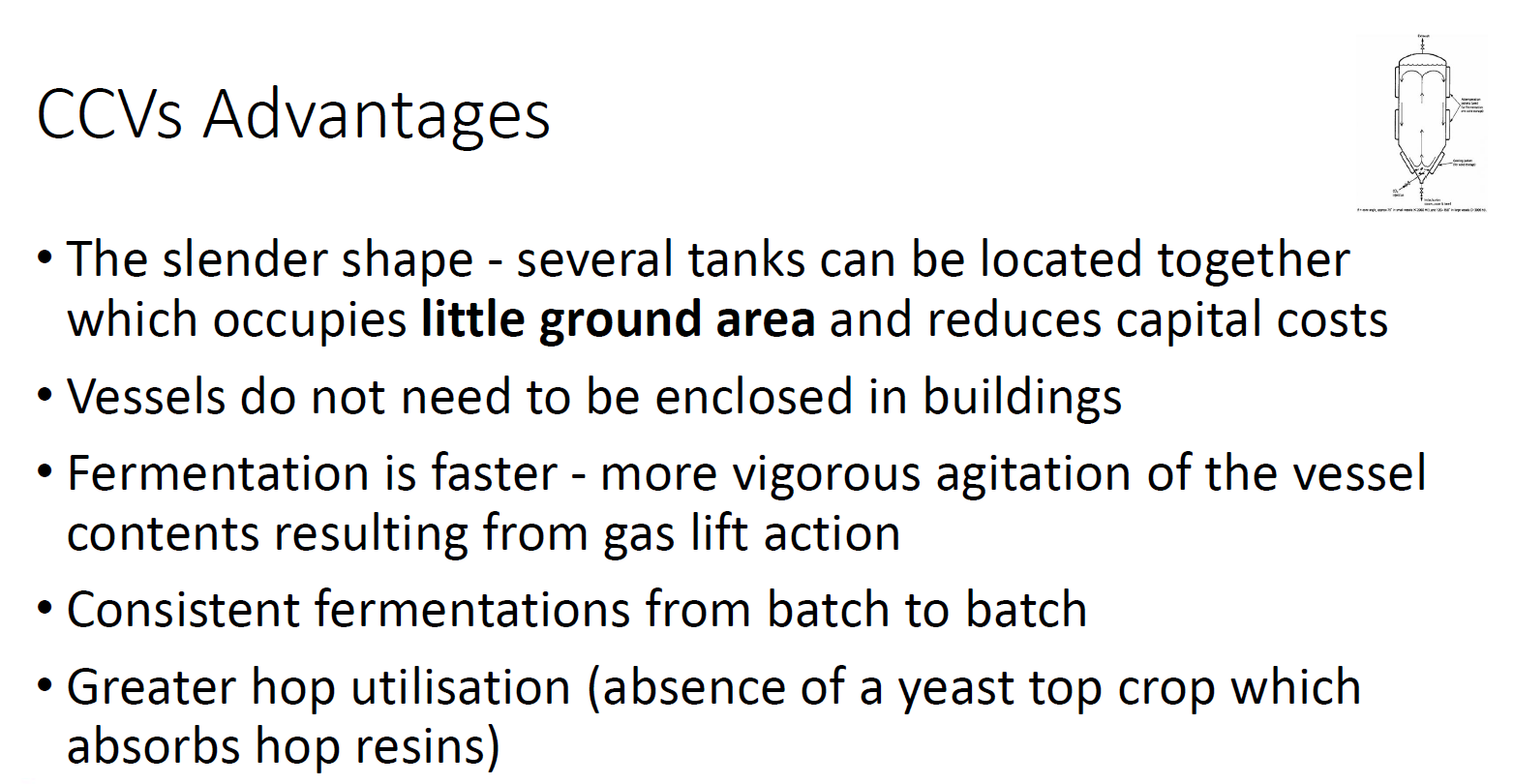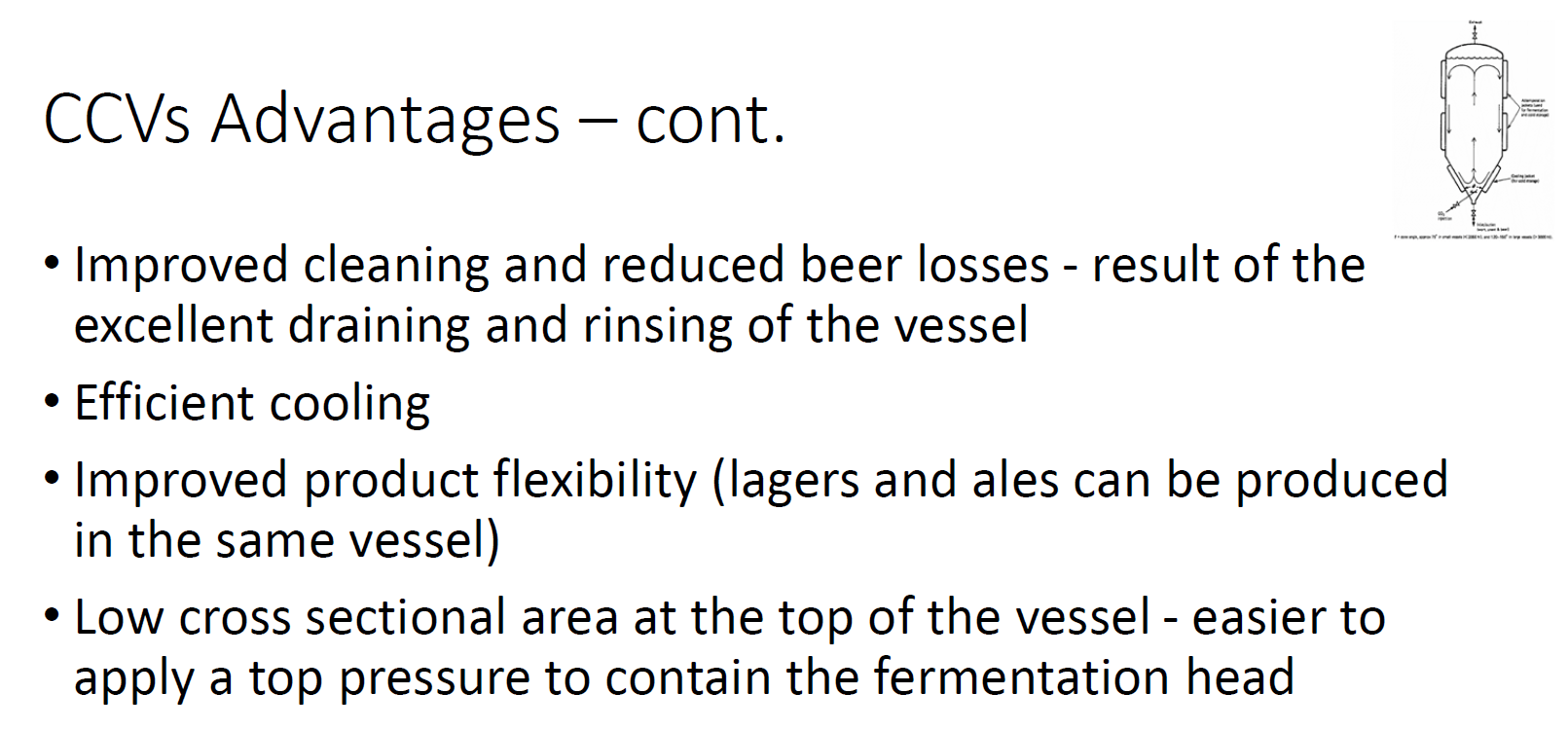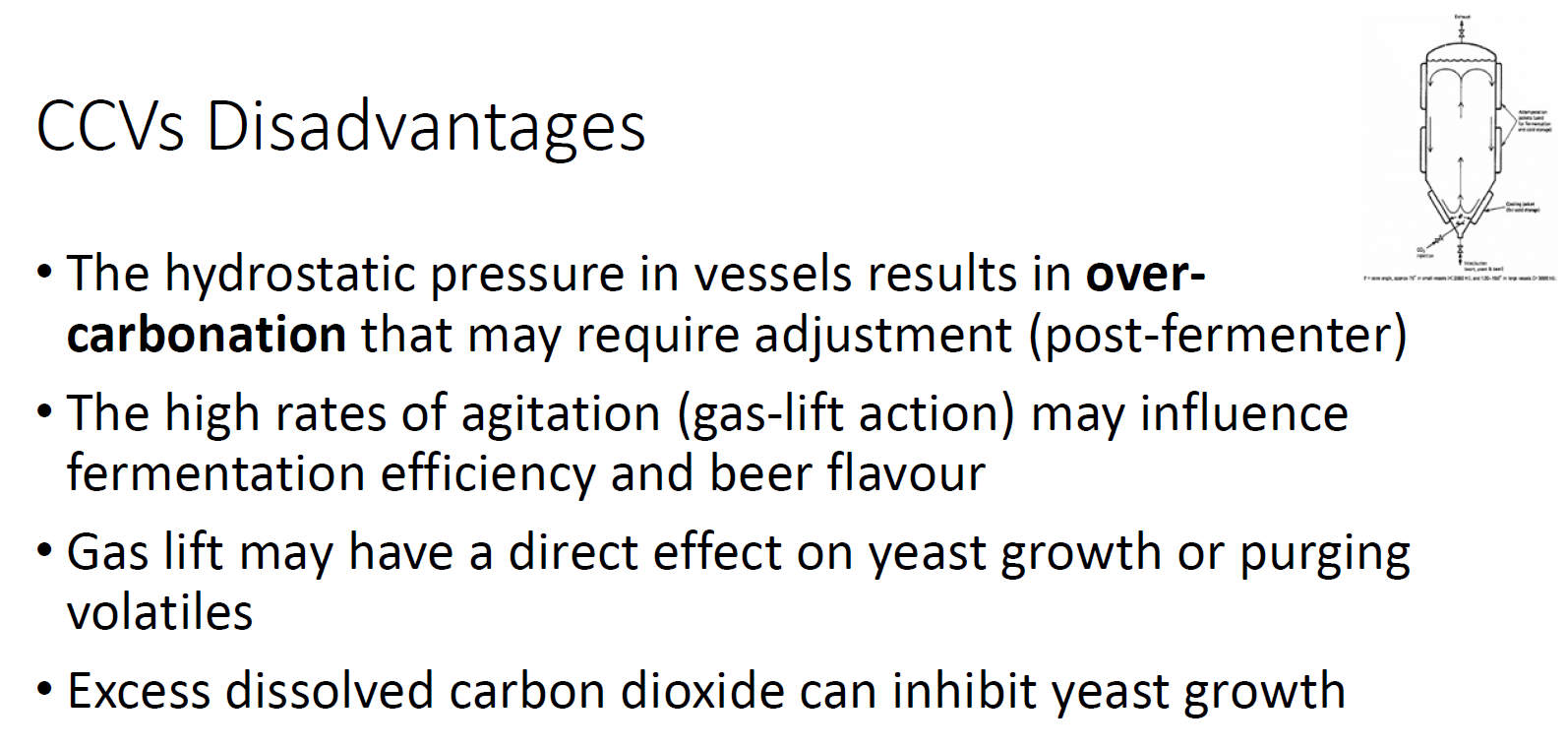Cylindroconical vessels (CCVs), also known as unitanks, are vessels designed to handle both fermentation and maturation stages of beer production in a single container. They have a cylindrical shape with a conical bottom, which makes them suitable for various processes in brewing. Here are some advantages and disadvantages of using CCVs:
Advantages:
- Space-saving: CCVs eliminate the need for separate fermentation and maturation vessels, allowing breweries to save space and reduce equipment costs.
- Improved yeast management: The conical bottom allows for easier collection and removal of yeast, making it easier to harvest yeast for reuse in future batches.
- Consistent product quality: By conducting fermentation and maturation in the same vessel, there is reduced risk of contamination from transferring the beer between tanks, resulting in a more consistent final product.
- Faster production time: CCVs allow for quicker turnaround times, as the beer can be fermented, matured, and even carbonated in the same vessel, streamlining the production process.
- Versatility: CCVs can be used for various fermentation methods, such as top-fermenting, bottom-fermenting, and even mixed fermentation with both yeast and bacteria.
Disadvantages:
- Limited flexibility: If a brewery has only CCVs, it may be challenging to manage simultaneous fermentation and maturation processes, as the tanks are occupied for the entire duration of both stages.
- Capital cost: CCVs tend to be more expensive than traditional fermentation vessels, which may be a disadvantage for smaller breweries or those with limited budgets.
- Cleaning and maintenance: The design of CCVs may make cleaning and maintenance more complex, as the conical bottom can be harder to access and clean than a flat-bottomed vessel.
- Size limitations: CCVs are typically larger than traditional fermentation vessels, which may not be suitable for small-scale breweries or homebrewers with limited space.
Overall, the decision to use CCVs depends on the specific needs and goals of the brewery. When considering factors such as available space, production volume, and budget, CCVs can offer significant benefits in terms of efficiency and product quality. However, they may not be the best fit for every brewing operation due to their size, cost, and potential limitations in flexibility.
장점:
- 공간 절약: CCV는 발효 및 숙성 공정을 동시에 처리할 수 있어 별도의 발효 및 숙성 용기가 필요하지 않아 공간과 장비 비용을 절약할 수 있습니다.
- 효모 관리 개선: 원뿔형 바닥 덕분에 효모를 쉽게 수집하고 제거할 수 있어, 다음 배치에서 효모를 재사용하기가 더 쉽습니다.
- 일관된 제품 품질: 발효와 숙성을 동일한 용기에서 진행함으로써, 맥주를 다른 탱크 사이에서 이동시키는 과정에서 발생할 수 있는 오염의 위험을 줄이고 최종 제품의 품질을 더욱 일관되게 만듭니다.
- 빠른 생산 시간: CCV를 사용하면 맥주를 동일한 용기에서 발효, 숙성, 심지어 탄산화할 수 있어 생산 과정을 단축할 수 있습니다.
- 다양성: CCV는 상단 발효, 하단 발효, 심지어 효모와 박테리아를 혼합한 혼합 발효와 같은 다양한 발효 방법에 사용할 수 있습니다.
단점:
- 제한된 유연성: 양조장이 CCV만 사용하는 경우 동시에 발효 및 숙성 공정을 관리하는 것이 어려울 수 있습니다. 왜냐하면, 용기가 두 과정의 전체 기간 동안 사용되기 때문입니다.
- 자본 비용: CCV는 전통적인 발효 용기보다 비싼 경향이 있어, 작은 양조장이나 예산이 제한된 경우에는 단점이 될 수 있습니다.
- 청소 및 유지 보수: CCV의 디자인으로 인해 청소 및 유지 보수가 복잡해질 수 있습니다. 원뿔형 바닥이 평평한 바닥 용기보다 접근하고 청소하기 어려울 수 있기 때문입니다.
크기 제한: CCV는 전통적인 발효 용기보다 일반적으로 크기가 크기 때문에, 공간이 제한된 소규모 양조장이나 홈브루어들에게는 적합하지 않을 수 있습니다.
결론적으로, 양조장의 특정 요구 사항과 목표에 따라 CCV 사용 여부를 결정할 수 있습니다. 사용 가능한 공간, 생산량 및 예산과 같은 요소를 고려할 때, CCV는 효율성과 제품 품질 측면에서 상당한 이점을 제공할 수 있습니다. 그러나 크기, 비용 및 유연성의 잠재적 제한으로 인해 모든 양조 작업에 가장 적합하지 않을 수도 있습니다.




'제품 Review > 맥주이야기' 카테고리의 다른 글
| the difference between respiration and fermentation (0) | 2023.04.16 |
|---|---|
| Brewery tank implosion (0) | 2023.03.26 |
| Brewery job interview (0) | 2023.03.02 |
| the difference between Ale and Lager brewing yeasts (0) | 2023.02.05 |
| the importance of the introduction of pure yeast cultures by Emil Christian Hansen intothe Carlsberg brewery in 1883 (0) | 2023.02.05 |